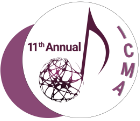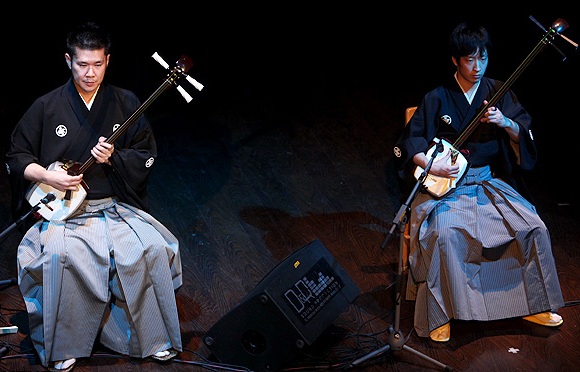Japanese music culture and famous musicians
Japan is one of the countries with a very rich music culture, and there have been certain types of Japanese music that characterize its culture since ancient times. The main objective of this post is to introduce the traits of Japanese music culture as well as important musicians and traditional instruments.
Today, when people talk about music in Japan, phrases like Hugako and Yogako are constantly mentioned. These words are rooted in the theory that music (goku) is generally divided into Japanese and Western music.
Hugaku means “Japanese music” and Yugo means “Western music”. The actual meanings of these words are a little more complicated than a simple subdivision. So let’s compare Hugako and Yogakoo from a Native Japanese perspective with regard to the three areas of “Art of Music”, “Folk Music” and “Pop Music”. These areas are subsequently used in the division of music and make so-called “ideal examples” but do not necessarily represent the concept and essence of music.
“Art of Music” implies music whose listeners are high-level people and elders; the composers can be known; the notes of this type of music have been written before; people have embraced this type of music for many years and whose values are artistic.
The listeners of local music are regional people; the composers are unknown, and are transmitted through oral transmission and expression; people have been embracing this type of music for many years, aiming at uniting their emotions and emotions of the community.
History of Japanese music
The earliest signs of Japanese music can be found in pottery and in ancient Chinese books. This book about Japanese music reads: “Japanese people drink, sing and dance at a funeral to soothe the soul of the dead.” Some of the pottery works from old tombs depict the role of a woman and a child, and the woman is singing. A man is sitting next to a woman with a harpoon instrument.
Foreign music first came to Japan in the seventh century. Gigaku, a masked character, was brought to Japan by a Korean man. Subsequently, Korean, Chinese, Thai, and other countries’ music came to Japan, blending Japanese traditional dance and music, creating Gagako (court music) in the eighth century.
In the twelfth century, another type of Japanese music called “Hikiyoku” was formed and in the 5th and 6th centuries, Japanese music became more popular. Western music came to Japan in the late nineteenth century and many Japanese musicians used Western and European music styles in their compositions. So there was a great classical musician and composer from Japan.
Pop music in Japan
“Pop Music” has attracted many listeners. There are certain composers – they play through instruments that record the sounds, and the acceptance of this kind of music is almost short. It is also aimed at financial gain.
First, we want to see what the place is in the art of music in Japan. For example, a kind of Koto music called Satsuko by Yatsuhashi Kangyo is an example of Japanese music (Hugaku). On the contrary, the orchestral work by Japanese composers such as Takmitsotaru, who trained music in the West, is known as “Western-Japanese” (Japanese Yakaku).
As these examples show, the basis of the division of Japanese music into Hugako and Yugo is not based on their birthplace but by the style of music.
On the other hand, pop music has different criteria. Works by Western composers and Western performers fall into the category of Yugo, but if added to the same Japanese soundtrack and read by a Japanese singer, they fall into the Hokago category.
The song by the Young Men’s Christian Association, sung by an American band called Village People in 1978, is also a yogaku, but a Japanese version of the song is called “Young Man” by Japanese singer Saju Hideki. In addition, yoga in pop music also includes songs performed by artists from Turkey to Singapore. In other words, in the case of pop music, the distinction between Hogaku and Yoga is based on the language of the sonnet and the place of birth. To be precise, Yu means “far from Japan”.
The idea of dividing the various types of phenomena in Japan into two categories hō (or wa meaning Japanese) and yō is also found in other fields apart from music, but the classification into two categories hō and yō according to different criteria in different domains. Also, other factors, such as the conceptual implications of the phrase “NibonOnaku” complicate the matter.
The phrase “NibonOnakaku” means “Japanese music”. But basicallyNibonOnakaku is considered Japanese music in the field of local art and music, whereas in pop music it is no longer Japanese. Simply put, antiquity, when it represents “long-term acceptance,” is unconsciously judged, though not all Suk Yukos (Koto music) made in the late second half of the twentieth century are considered “Japanese music”. But a pop song made in the early part of the century is no longer a Japanese song. If one considers the criterion of “time dating” at first glance, it may represent a specific part of Japan as a whole.
Famous Japanese musicians
Here are the names of some of Japan’s most famous composers and musicians:
Rentarō Taki
He is one of Japan’s premier artists and Jabest pianists. Rentarō Taki was born in 1879 in Tokyo. He began playing piano as a child and graduated from the Tokyo School of Music in 1901.One of Rentarō Taki’s famous compositions is the masterpiece Kōjō no Tsuki, performed by different musicians with different arrangements. His other famous works include the pieces of Hakone-Hachiri and Hana. The Japanese composer and musician died in 1903 in Tokyo.
Hikaru Hayashi
He is one of the most famous Japanese composers and musicians with many masterpieces in opera, symphony, and soundtrack. Born in Tokyo in 1931, Hikaru Hayashi learned the basics of music at the Tokyo School of Art and continued his music career. Famous pieces by Hikaru Hayashi include Romeo and Juliet, Metamorphosis, Symphonic Sketch, and many other beautiful pieces used in various performances and films. Hikaru Hayashi was very good at playing the piano and recorded many pieces with the piano. The Japanese artist died in 2012.
Minoru Miki
A prominent Japanese traditional instrumentalist, who has provided valuable service to the world by introducing Japanese music, was born in Japan in 1930. Miki began music with traditional instruments in her home country.
After attending Tokyo Art University, Miki became familiar with European classical music. And then he formed an orchestra with traditional Japanese instruments. He performed many acts with the Erin Orchestra in different countries. Miki passed away in 2011 in Tokyo.

Umekichi
Umekichi is a Japanese singer and songwriter who works in traditional Japanese pop and singing. This Japanese artist lady was born in 1966 in okayama, japan. Umekichi’s fame is due to the combination of traditional Japanese music with modern and pop music, which uses modern features and pop songs in his performances using the traditional shamisen instrument.

Traditional Japanese instruments
Like many countries, Japan has its trumpet instruments that have long been used in Berley music performances since ancient times. Traditional Japanese instruments show different types of percussion instruments, such as percussion, stringed instruments, and wind instruments. Below we introduce some of the traditional Japanese instruments.
Wadaiko
One of Japan’s famous percussion instruments is Wadaiko, a large two-sided drum. The instrument is made of a hollow wooden body and the sides of it are covered with leather skin, which is created by tapping the skins with a special stick to create a loud drum sound. Originally used in warfare to coordinate and warn the army, it has been used today for temple and religious ceremonies.
Shamisen
It is a Japanese wired and melodic instrument that marks the beginning of the modern era of Japanese music. It consists of a rectangular wooden body and a skin on the body that flows sound from the wire into the body. The body is connected to a long handle and has Three strings. The history of this construction dates back to the 17th and 18th centuries and the Edo period.
Nohkan
Nohkan is one of Japan’s oldest wind instruments, a kind of flute. Japanese special noh is used with the drum. The Nohkan sound is very beautiful and special and has a huge impact on the audience.

Koto
Koto is a string instrument invented by the Japanese. The instrument has a wooden body on which the wires are mounted. On the instrument are bridges over which the wire crosses and the toddler plays with his finger or nail.
There are two popular types of koto; one is called yamato-goto and the other is SO, developed by the Chinese. Koto is a very ancient Japanese instrument used in rituals for fun and entertainment and in some cases, also used for religious ceremonies.
Background photo created by freepik – www.freepik.com
If you’re a musician looking for the opportunity to showcase your talents on a global stage, look no further than the InterContinental Music Awards. As one of the most prestigious music awards in the world, the InterContinental Music Awards recognize and celebrate the best in music across all genres and regions.
You’ll have the opportunity to be heard by music industry executives and be internationally recognized.
So don’t wait – submit your music to the InterContinental Music Awards today and take the first step towards global recognition and success by clicking here!


